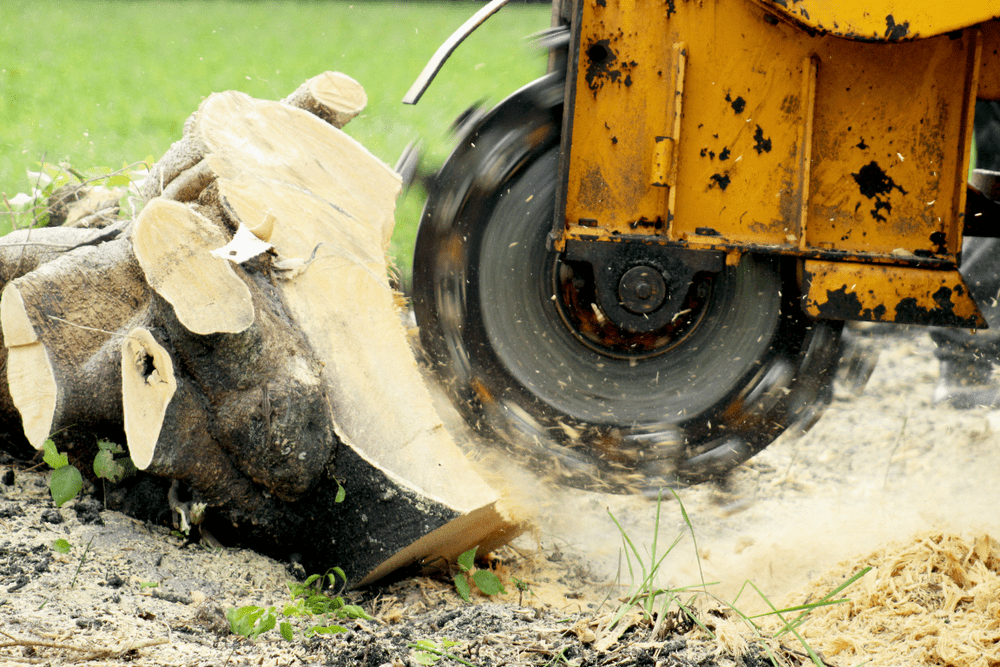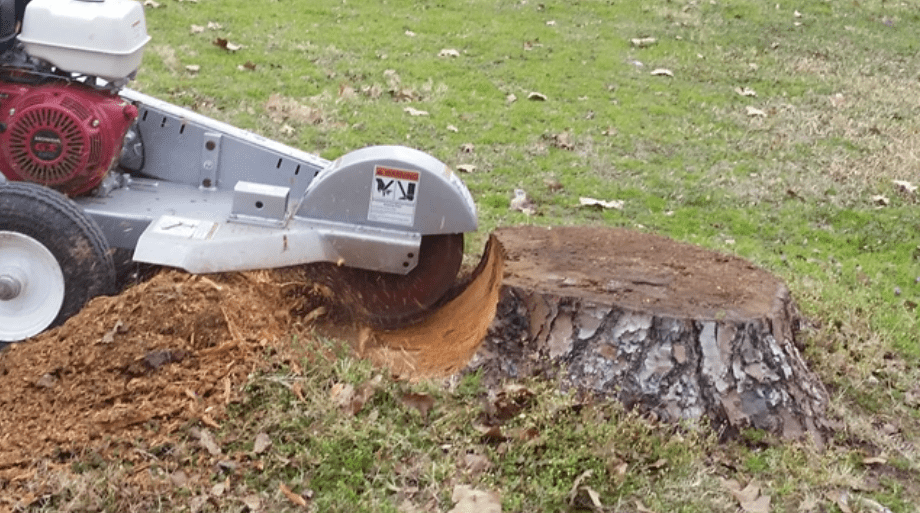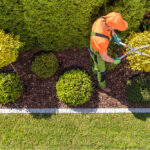Is It Tree Stump Removal A Good Choice
After the heavy lifting of removing a tree piece by piece is done, what’s left behind is the sturdy stump that once anchored the tree in place.
That stump comes with lots of questions about what to do next. Should you leave it in your yard untouched, or remove it in one fell swoop with the rest of your tree?
Or, what about grinding the stump—how does that work?
Keep reading for answers to know if tree stump removal is really necessary

Reasons To Tree Stump Removal Or Leave A Tree Stump In The Ground
Can’t decide whether to hold on to your stump or haul it out for good? At Green Grounds Landscaping in Minnesota we recomend tree stump removal if you can.
An old tree stump might not cause problems at first, but the longer you let it stick around, the more it can become a nuisance.
Is It Good To Leave A Tree Stump In The Ground? Do Tree Stumps Attract Termites?
Shortly after they’re separated from the tree that once stood in your yard, stumps begin a very slow decaying process.
And yes, over time a rotting stump becomes a hub for home damaging pests like termites or carpenter ants.
So, while you can opt to leave the stump and let it rot, the critters that come along in the process might spread out to other plants and trees in your yard or even invade your home.
Tree stamp removal, or grinding it down, is the best way to avoid these pest problems.
Why Else Should I Opt For Tree Stump Removal?
Creepy critters aren’t the only argument for tree stump removal. You should also consider letting go of your stump because:
- A decaying stump isn’t so pretty. It can throw off the whole look of your yard and even affect your property value
- The spot where the stump sits is off limits when mowing your lawn, and the stump or roots could damage your mower if you accidentally roll over them
- Planting new trees nearby is a no go as long as the stump and far-reaching roots are in the way

Which Is A Better Option, To Grind A Stump Or Tree Stump Removal?
Tree stump grinding and tree stump removal both come with their pros and cons.
Choosing which route’s best for you mostly depends on the future plans you have for your landscape.
The tree stump removal process is the more intrusive of the two. It involves heaving up the bulky tree stump and then digging out all the tree’s widespread roots.
As you can imagine, it takes a lot of time, elbow grease, and powerful tools to get the job done.
The upside? After tree stump removal, you’re left with a clean slate open to any new ideas you have for your landscape.
What’s not so great is that tree stump removal leaves behind a large hole that can be an eyesore until it’s filled in.
Stump grinding is much less intensive. In this case, arborists use a machine to completely shred the stump down into small woodchips.
Grinding is much more efficient than tree stump removal, however, it does leave the tree’s roots behind.
If the stump is large, the chip pile produced can also be quite large, but the chips can be used as mulch for other plants in your landscape.
What Happens To Roots After Grinding?
While stump grinding takes care of the visible remains of the tree, the old tree’s roots are still spread out underground, sometimes 4, 8 or 12 feet beyond where the stump stood.
After grinding, these roots will naturally decay, but it’s a lengthy process. It can take 10-plus years for the roots to fully break down.
If you’re not sure whether tree stump removal or grinding is best for you, a Minessota professional landscaper can help.
Contact Green Grounds Landscaping LLC in Minnesota for a tree stump removal or stump grinding consultation.









